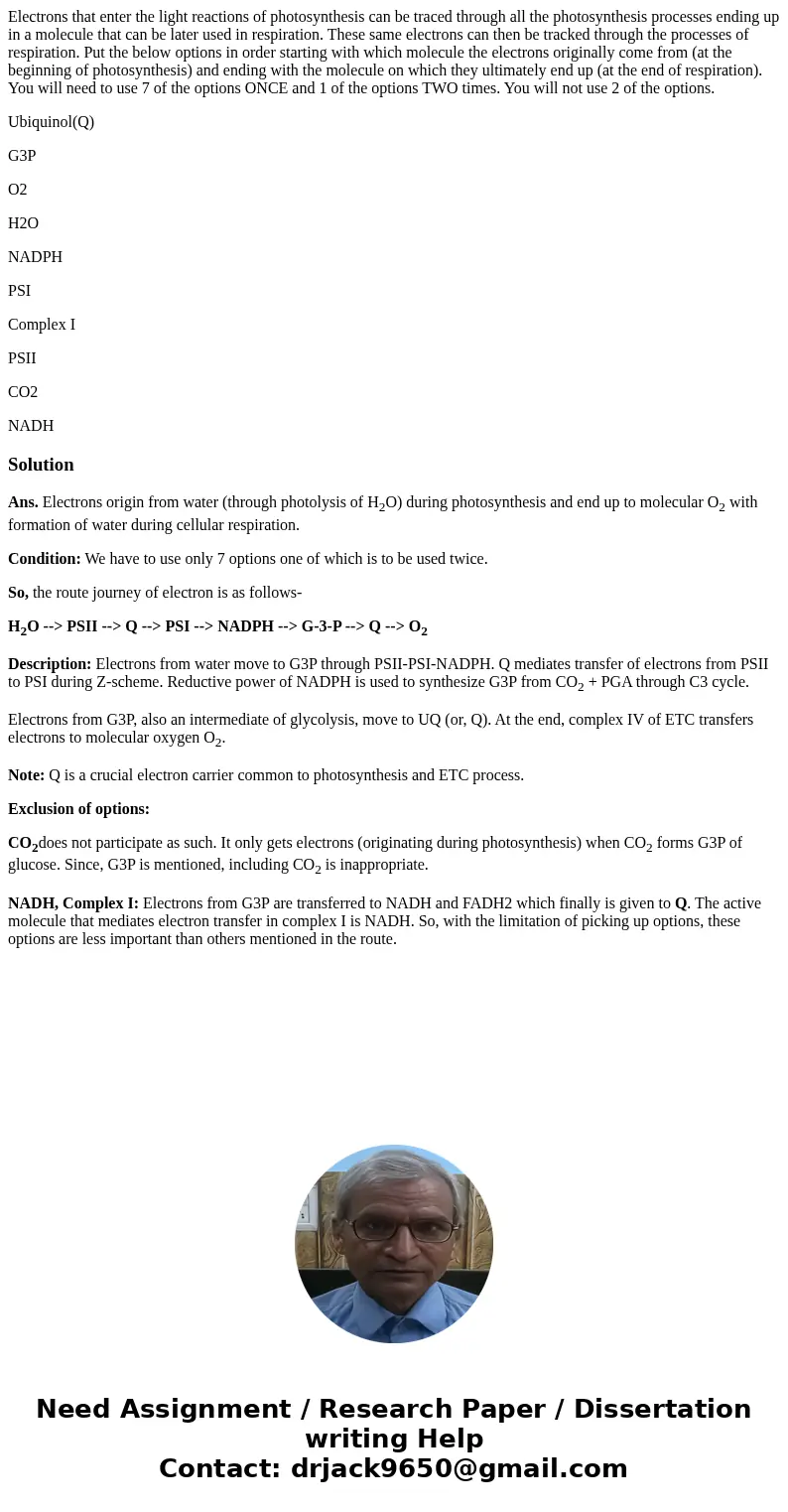Electrons that enter the light reactions of photosynthesis c
Electrons that enter the light reactions of photosynthesis can be traced through all the photosynthesis processes ending up in a molecule that can be later used in respiration. These same electrons can then be tracked through the processes of respiration. Put the below options in order starting with which molecule the electrons originally come from (at the beginning of photosynthesis) and ending with the molecule on which they ultimately end up (at the end of respiration). You will need to use 7 of the options ONCE and 1 of the options TWO times. You will not use 2 of the options.
Ubiquinol(Q)
G3P
O2
H2O
NADPH
PSI
Complex I
PSII
CO2
NADH
Solution
Ans. Electrons origin from water (through photolysis of H2O) during photosynthesis and end up to molecular O2 with formation of water during cellular respiration.
Condition: We have to use only 7 options one of which is to be used twice.
So, the route journey of electron is as follows-
H2O --> PSII --> Q --> PSI --> NADPH --> G-3-P --> Q --> O2
Description: Electrons from water move to G3P through PSII-PSI-NADPH. Q mediates transfer of electrons from PSII to PSI during Z-scheme. Reductive power of NADPH is used to synthesize G3P from CO2 + PGA through C3 cycle.
Electrons from G3P, also an intermediate of glycolysis, move to UQ (or, Q). At the end, complex IV of ETC transfers electrons to molecular oxygen O2.
Note: Q is a crucial electron carrier common to photosynthesis and ETC process.
Exclusion of options:
CO2does not participate as such. It only gets electrons (originating during photosynthesis) when CO2 forms G3P of glucose. Since, G3P is mentioned, including CO2 is inappropriate.
NADH, Complex I: Electrons from G3P are transferred to NADH and FADH2 which finally is given to Q. The active molecule that mediates electron transfer in complex I is NADH. So, with the limitation of picking up options, these options are less important than others mentioned in the route.

 Homework Sourse
Homework Sourse